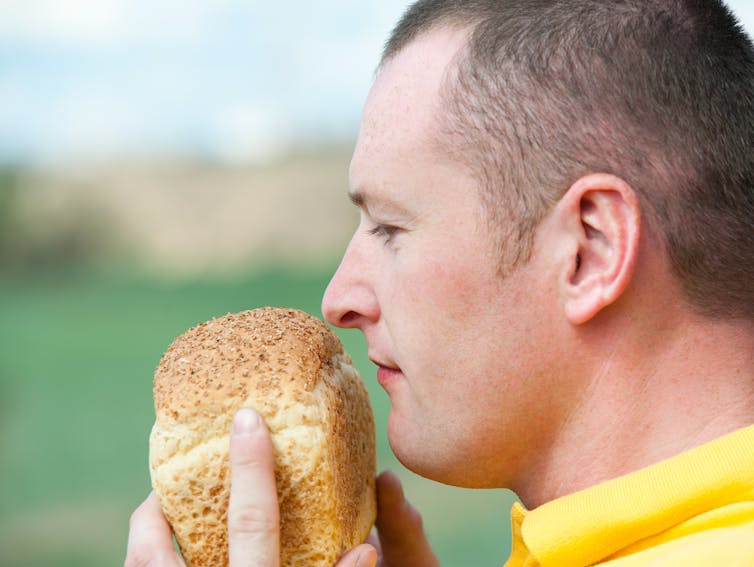If You Defrost Meat Can You Freeze It Again
This time of yr, most fridges are stocked up with nutrient and drinks to share with family and friends. Let'southward not make ourselves and our guests sick by getting things wrong when preparing and serving nutrient.
As the weather condition warms upwardly, so does the surroundings for micro-organisms in foods, potentially assuasive them to multiply faster to hazardous levels. So put the drinks on water ice and keep the fridge for the food.
Just what are some of those food safety myths we've long come to believe that aren't actually true?
Myth 1: if you've defrosted frozen meat or chicken you can't refreeze it
From a safety point of view, it is fine to refreeze defrosted meat or chicken or any frozen nutrient as long as information technology was defrosted in a refrigerator running at 5°C or below. Some quality may be lost past defrosting then refreezing foods equally the cells break down a little and the food can become slightly watery.
Some other option is to cook the defrosted food and then divide into small-scale portions and refreeze once it has stopped steaming. Steam in a closed container leads to condensation, which can effect in pools of water forming. This, combined with the nutrients in the nutrient, creates the perfect surround for microbial growth. So information technology's always all-time to look about 30 minutes before refrigerating or freezing hot food.
Programme ahead so food can be defrosted in the refrigerator, specially with large items such as a frozen turkey or roll of meat. If left on the demote, the external surface could exist at room temperature and micro-organisms could be growing rapidly while the centre of the piece is still frozen!
Myth 2: Wash meat earlier yous set up and/or melt it
It is not a expert idea to wash meats and poultry when preparing for cooking. Splashing water that might contain potentially chancy leaner around the kitchen can create more of a hazard if those bacteria are splashed onto ready-to-eat foods or food preparation surfaces.
It is, all the same, a good thought to launder fruits and vegetables earlier preparing and serving, especially if they're grown near or in the ground as they may carry some dirt and therefore micro-organisms.
This applies particularly to foods that will be prepared and eaten without farther cooking. Consuming foods raw that traditionally have been eaten cooked or otherwise candy to kill pathogenic micro-organisms (potentially mortiferous to humans) might increase the risk of nutrient poisoning.
Fruit, salad, vegetables and other fix-to-eat foods should exist prepared separately, away from raw meat, chicken, seafood and other foods that need cooking.
Myth iii: Hot food should be left out to cool completely before putting it in the fridge
Information technology'south not OK to leave perishable food out for an extended fourth dimension or overnight before putting information technology in the fridge.
Micro-organisms tin grow rapidly in food at temperatures betwixt 5° and lx°C. Temperature command is the simplest and most effective fashion of controlling the growth of leaner. Perishable nutrient should spend every bit piffling time as possible in the 5-60°C danger zone. If food is left in the danger zone, be aware information technology is potentially unsafe to eat.
Hot leftovers, and any other leftovers for that matter, should go into the fridge once they have stopped steaming to reduce condensation, within about thirty minutes.
Big portions of hot nutrient will cool faster if broken down into smaller amounts in shallow containers. It is possible that hot nutrient such as stews or soup left in a beefy container, say a 2-litre mixing bowl (versus a shallow tray), in the refrigerator can take almost 24 hours to cool to the safe zone of less than 5°C.
Myth 4: If information technology smells OK, and then it's OK to consume
This is definitely non always true. Spoilage bacteria, yeasts and moulds are the usual culprits for making nutrient smell off or go slimy and these may non brand you sick, although it is always appropriate not to consume spoiled food.
Pathogenic bacteria can grow in nutrient and not cause any obvious changes to the food, so the best option is to inhibit pathogen growth past refrigerating foods.

Myth 5: Oil preserves nutrient and so information technology can exist left at room temperature
Adding oil to foods will not necessarily kill bugs lurking in your food. The reverse is truthful for many products in oil if anaerobic micro-organisms, such equally Clostridium botulinum (botulism), are present in the nutrient. A lack of oxygen provides perfect conditions for their growth.
Outbreaks of botulism arising from consumption of vegetables in oil – including garlic, olives, mushrooms, beans and hot peppers – accept mostly been attributed to the products non being properly prepared.
Vegetables in oil can be made safely. In 1991, Australian regulations stipulated that this class of production (vegetables in oil) can be safely made if the pH (a mensurate of acid) is less than 4.vi. Foods with a pH beneath 4.vi exercise not in general support the growth of nutrient-poisoning bacteria including botulism.
And then keep food out of the danger zone to reduce your guests' adventure of getting food poisoning this summer. Cheque out other nutrient safety tips and resources from CSIRO and the Food Condom Information Council, including testing your food safety knowledge.
Source: https://theconversation.com/you-can-thaw-and-refreeze-meat-five-food-safety-myths-busted-51125
0 Response to "If You Defrost Meat Can You Freeze It Again"
Post a Comment